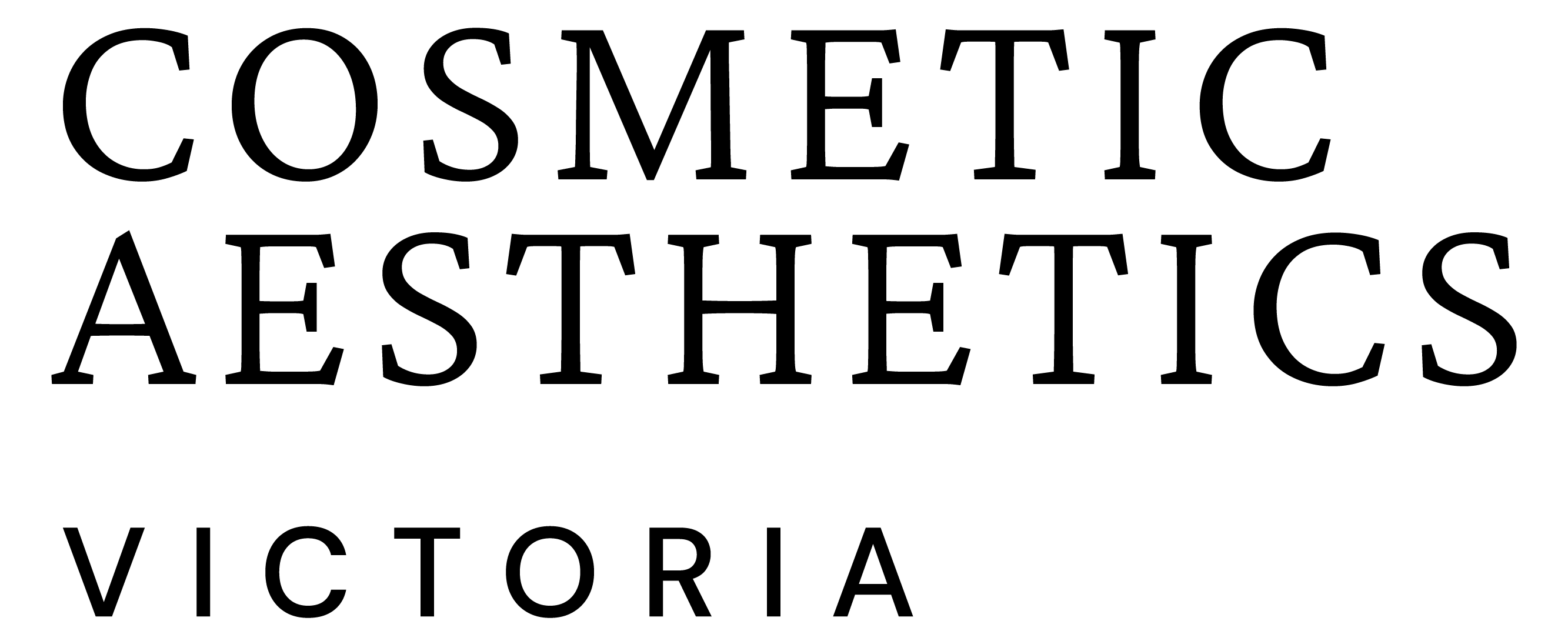
What’s The Difference Between IPL And Laser Hair Removal?
When it comes to hair removal, two treatments dominate the conversation: IPL (Intense Pulsed Light) and laser hair removal. While both promise smooth, hair-free skin, they work in fundamentally different ways and offer distinct benefits. But which one is right for you?
As someone who has worked closely with clients seeking lasting hair reduction, I’ve seen firsthand how these two methods compare in terms of effectiveness, pain, cost, and results. Whether you’re tired of waxing, shaving, or just want a more permanent solution, understanding the differences between IPL vs laser hair removal is the first step in choosing the right option for your skin type, hair colour, and personal needs.
In this blog, I’ll break down the key differences, share real-world examples, and guide you through the pros and cons of each method, helping you make an informed decision. Let’s dive into how IPL and laser hair removal stack up against each other—and which one might be your best choice!
The Core Difference Between IPL And Laser Hair Removal
What Is Laser Hair Removal?
When I first learned about laser hair removal, I was intrigued by the precision and effectiveness it promised. The technology behind it relies on a single, concentrated wavelength of light that directly targets the melanin in hair follicles. This monochromatic light, which is a single colour, is incredibly focused and can penetrate deep into the skin. The laser is carefully calibrated to ensure it doesn’t harm the surrounding skin, and instead, it works by converting the light energy into heat, damaging the hair follicle.
I remember a client of mine in Melbourne, Sophie, who had been frustrated with traditional methods like waxing. After just a few sessions with the Alexandrite laser, her thick, dark hair had significantly thinned out. Sophie was absolutely delighted—laser hair removal proved to be a game-changer for her.
In short, laser hair removal is a high-powered, precision tool. It’s ideal for people with darker, coarser hair and lighter skin tones. But modern laser technology, such as the Nd:YAG laser, has now evolved to safely cater to darker skin tones as well.
What Is IPL (Intense Pulsed Light)?
Now, when we talk about IPL, the technology is quite different. Think of it as a flashbulb—where a broad spectrum of light is used, rather than the single beam produced by lasers. IPL emits multiple wavelengths of light, which scatter across the skin, targeting melanin in the hair follicles. Because of the broad light spectrum, IPL is not as focused or concentrated as laser hair removal.
When I first tried IPL, I was curious to see how it stacked up against laser. I had a couple of clients at my clinic who were looking for a less intense option. One of them, a client named Rachel, was looking for something suitable for her lighter skin and hair. IPL worked wonders for her, as it is effective for hair types that aren’t as coarse as the darker hair that laser treatment typically works best on.
While IPL can be just as effective as laser hair removal for hair reduction, it’s more versatile, treating a range of skin concerns like pigmentation, acne, and sun damage. However, it doesn’t pack the same punch as laser hair removal when it comes to deep follicle targeting.

How IPL And Laser Hair Removal Work Differently?
The Mechanism Of IPL Hair Removal
Both IPL and laser hair removal work on the same principle: selective photothermolysis. This means they use light energy, which is absorbed by the melanin (pigment) in the hair follicles. The heat generated by this absorption damages the follicles, making it harder for the hair to grow back.
But here’s where the key difference lies:
With IPL, the broad spectrum of light can sometimes be absorbed by other chromophores in the skin, like hemoglobin, which is why IPL is also used to treat skin conditions like redness and rosacea. However, this scatter effect makes it slightly less precise than laser, where a single, focused beam can hone in on the hair follicle with laser-sharp accuracy (pun intended!).
The advantage of IPL is its versatility. For example, if you have lighter skin and darker hair, IPL may do the job just fine, but results might not be as long-lasting as laser treatments, and you’ll need a few more sessions to get those smooth results.
The Mechanism Of Laser Hair Removal
Laser hair removal, on the other hand, uses a single, specific wavelength of light that is carefully targeted. The light is focused on the hair follicle, where it is absorbed by the pigment (melanin), turning into heat. This heat damages the hair follicle, ultimately preventing further hair growth.
What I’ve seen in practice is that this highly concentrated light is a major advantage, particularly for people with dark, coarse hair. It’s precise, and because of its targeted nature, it offers more predictable, long-term results. I recall working with a client named Jason, who had coarse facial hair. His results after three sessions of laser hair removal were incredible—nearly 80% of his hair had been permanently reduced, and he was thrilled.
Laser hair removal is an investment in your future because, in fewer sessions, you get long-lasting results that can last for years. But remember, it’s not a “one and done” procedure—just like IPL, you’ll need to follow up with maintenance sessions.
IPL Vs Laser Hair Removal: Effectiveness And Results
Which Is More Effective For Hair Removal?
This is where things get interesting. While both treatments are effective, laser hair removal generally outshines IPL when it comes to consistent, long-lasting results.
Based on my experience, laser hair removal tends to offer up to 90% hair reduction in fewer sessions compared to IPL, which typically offers more modest results (around 50-70%) in similar treatment cycles. However, the effectiveness of IPL can depend heavily on hair type, with fine or light hair often being less responsive to IPL treatment.
How Long Do The Results Last?
As for longevity, laser hair removal has the upper hand here as well. After completing your treatment sessions, laser hair removal can deliver permanent hair reduction. It can take a few treatments to achieve significant results, but once you’re done, you’ll be looking at long-term benefits. For some clients, it’s a once-in-a-lifetime experience.
On the other hand, IPL may require regular touch-ups every 6-12 months to maintain results. While it does a great job, it’s not quite as effective for permanent hair removal, and you’ll find yourself needing more sessions to reach the same level of hair reduction that laser provides.
Pros And Cons Of IPL Vs Laser Hair Removal
Pros Of Laser Hair Removal
- Long-lasting results: Fewer sessions needed, with some clients achieving up to 90% reduction.
- Effective for darker, coarser hair: Works especially well for people with dark, coarse hair and light skin.
- Precision: Laser is more focused, targeting specific hair follicles with accuracy.
Cons Of Laser Hair Removal
- Higher upfront cost: More expensive per session, though you may save money in the long run due to fewer sessions.
- Pain: Some clients experience more discomfort, which can feel like a rubber band snapping against the skin.
- Not effective on light or grey hair: Laser hair removal works best on darker hair, so it may not work well for lighter or grey hair types.
Pros Of IPL Hair Removal
- More affordable per session: IPL tends to be less expensive per treatment, though you may need more sessions.
- Versatility: In addition to hair removal, IPL can address skin issues like acne and pigmentation.
- Less painful: Generally, IPL is less painful compared to laser hair removal.
Cons Of IPL Hair Removal
- Requires more sessions: IPL typically requires more treatments to achieve the same results as laser hair removal.
- Not suitable for dark skin tones: IPL may cause burns or pigmentation issues in individuals with darker skin tones.
- Less effective on fine or light hair: IPL is less effective on fine or light hair compared to dark, coarse hair.

IPL Vs Laser For Different Skin Tones And Hair Types
When considering IPL vs laser hair removal, the first thing that comes to mind is skin tone and hair colour. In my practice, I’ve often had clients asking me which method is best suited for them, based on their unique characteristics. It’s a critical factor to consider because both technologies work differently on various skin and hair types.
For instance, laser hair removal generally performs best on dark, coarse hair. This is because the concentrated light targets the pigment (melanin) in the hair follicle. The greater the contrast between the skin and hair, the better the results. For people with fair skin and dark hair, laser hair removal is incredibly effective, often resulting in permanent hair reduction after just a few sessions.
However, technology has improved, and now Nd:YAG lasers are designed specifically for darker skin types (Fitzpatrick V and VI). I’ve worked with a number of clients with medium to dark skin tones, and these newer lasers have delivered solid results with minimal risk of hyperpigmentation or burns. For instance, a client named Maria, who has Fitzpatrick IV skin, found that Nd:YAG laser treatments worked well for her, achieving over 70% reduction after just six sessions.
On the other hand, IPL works best for those with light to medium skin tones (Fitzpatrick I-III) and dark hair. The broader spectrum of light used in IPL means that it can sometimes target the melanin in the skin as well, especially for darker skin tones, which could lead to burns or pigmentation issues. I recall working with a client named Jake, who had medium-toned skin and dark hair. For him, IPL was perfect—it was gentle, and he didn’t experience any of the discomfort that can sometimes come with laser treatments.
In short, laser hair removal tends to be more versatile for a variety of skin tones, especially with newer technology, while IPL is best suited for lighter skin and darker hair.
IPL Vs Laser Hair Removal: Pain And Comfort
Pain Levels Of Laser Hair Removal
Pain is always one of the biggest concerns when it comes to laser hair removal. It’s something I’ve encountered time and time again in my clinic. While the intensity of discomfort can vary depending on the treatment area and the individual’s pain tolerance, most people describe the sensation as feeling like a rubber band snapping against the skin.
Now, don’t get me wrong—laser hair removal isn’t unbearable. I’ve had plenty of clients who’ve handled it without much fuss. In fact, many clients say that the discomfort is fleeting, especially when cooling devices are used to alleviate the heat. However, sensitive areas like the upper lip, underarms, and bikini line can be more painful.
To give you an example, a client named Emily came to me for bikini line hair removal. She was a bit nervous about the pain, but after a few sessions, she admitted that the discomfort was manageable, and the results made it worth it. The pain tends to be brief, with each pulse lasting only a fraction of a second. Plus, most clinics will use cooling systems to ease the discomfort.
Pain Levels Of IPL Hair Removal
Now, IPL is often described as less painful than laser hair removal, and in my experience, this holds true for most clients. The sensation is usually likened to the feeling of a warm rubber band snap or a slight sting. Because the light in IPL is less concentrated, it generally causes less discomfort during the procedure.
One thing I’ve noticed with IPL is that it’s generally less painful for clients with fair to medium skin tones and dark hair. The pain levels can also depend on the area being treated. For example, treating larger body areas like the legs or back can feel less intense compared to smaller, more sensitive areas like the underarms.
However, even though IPL is often more comfortable, it’s important to note that at-home IPL devices can cause more discomfort or even burns if used improperly. I had a client, Sarah, who had purchased an at-home IPL device and used it on her bikini line. Unfortunately, she didn’t follow the instructions carefully and ended up with mild burns. It was an important reminder to her (and to me!) of the importance of professional guidance when using these devices.
Safety And Side Effects: IPL Vs Laser Hair Removal
| Aspect | Laser Hair Removal | IPL (Intense Pulsed Light) |
| Safety Profile | Safe when performed by licensed professionals using the correct settings. | Riskier if performed by inexperienced users or with at-home devices. |
| Precision | Highly targeted – uses a single wavelength to focus on the hair follicle. | Less precise – uses a broad spectrum of light that can affect the surrounding tissue. |
| Pain/Discomfort | Feels like a rubber band snap; discomfort is manageable with cooling devices. | May feel like mild stinging or heat; often less intense, but varies with device. |
| Common Side Effects | – Temporary redness and swelling- Mild discomfort | – Temporary redness- Increased risk of irritation, especially on sensitive skin |
| Risk of Pigment Changes | – Temporary hyperpigmentation or hypopigmentation (rare) | – More likely in darker skin tones; can cause uneven pigmentation if misused |
| Risk of Burns/Scarring | – Rare, typically due to incorrect settings or outdated devices | – More common due to a broader light spectrum and improper use |
| Eye Safety | Protective eyewear is mandatory to prevent serious injury. | Eye protection is still required; misuse can still pose a risk. |
| User Risk (At-Home Use) | Generally not recommended without professional guidance. | Common with at-home devices, but higher risk of burns or misuse. |
| Operator Dependency | High effectiveness and safety depend on the technician’s training and device quality | High – especially risky when performed by inexperienced or untrained individuals |
IPL Vs Laser Hair Removal: Effectiveness And Results
When it comes to effectiveness, laser hair removal takes the lead. It’s widely regarded as the gold standard for long-term hair reduction, and in my practice, I’ve seen significant results with laser technology. For example, clients with thick, coarse hair (like dark leg or facial hair) typically see an 80-90% reduction after a series of treatments.
For IPL, while it can be effective, it’s often less consistent. The broader spectrum of light used in IPL can sometimes scatter, leading to less precise targeting of the hair follicle. I had a client, Louise, who had fine, lighter hair on her legs. After several IPL sessions, her results were noticeable but not as permanent or significant as what she had hoped for. In contrast, clients like Michael, who had dark, coarse hair, saw better results after just a few laser sessions.
Both IPL and laser hair removal work by targeting melanin in the hair follicles, but the precision of laser technology generally provides more effective and longer-lasting results.
How Long Do The Results Last?
For laser hair removal, the results tend to last much longer. After completing the recommended sessions (typically 6-8), clients often experience long-term hair reduction. I’ve had clients return for maintenance sessions once a year, but many report that their hair doesn’t grow back or only grows back fine and sparse. Some of my long-term clients have been hair-free for years after just one series of treatments.
On the other hand, IPL tends to require more regular touch-ups. IPL hair removal results can fade over time, especially for clients with finer or lighter hair. This makes IPL a more temporary solution compared to the more permanent results from laser hair removal.
IPL Vs Laser Hair Removal Cost Comparison
| Aspect | Laser Hair Removal | IPL Hair Removal |
| Cost per Session | $200–$500 | $100–$250 |
| Total for 6–8 Sessions | $1,200–$4,000 (depending on the area treated) | $1,000–$2,500 (typically requires more sessions for similar results) |
| Maintenance (per session) | One session every 6–12 months, typically around $150–$250 | One session every 6–12 months, typically around $100–$200 |
| Long-Term Cost Comparison | While the upfront cost per session is higher, laser hair removal generally offers longer-lasting results and requires fewer sessions, making it more cost-effective in the long run. | IPL is more affordable per session, but the overall cost may be higher due to the additional sessions needed to achieve similar results. |
IPL And Laser Hair Removal Aftercare
After both IPL and laser hair removal, it’s important to follow proper aftercare instructions. After laser hair removal, you may experience redness and swelling, but this typically fades within a few hours. Applying aloe vera gel or a soothing cream can help.
With IPL, the aftercare is similar. You may feel a slight warmth or redness in the treated area, which is generally temporary. One of the most important aftercare recommendations I give to all clients is the need for sun protection after IPL or laser hair removal. Both treatments make the skin more sensitive to the sun, and it’s essential to avoid direct sunlight for at least 48 hours. If you’re planning to be outside, always apply a high SPF sunscreen—ideally SPF 50+—to prevent sunburns or skin pigmentation changes.
Which Is Better For Hair Removal: IPL or Laser? A Clear Winner
When it comes down to choosing between IPL and laser hair removal, the big question on everyone’s mind is: which is truly the better option for hair removal? As someone who’s worked with both methods for years, I can say that the decision really boils down to a few key factors: your skin type, hair type, budget, and desired results. Let’s dive deeper into these elements to help you decide which treatment is best suited for you.
Laser Hair Removal: The Preferred Option For Most
For long-term hair reduction, laser hair removal is generally considered the gold standard. Why? Well, laser treatments typically require fewer sessions, are more precise, and tend to produce longer-lasting results if you’re after the most effective solution for significant and lasting hair reduction, especially on areas with thick, dark hair (think underarms, bikini line, or legs), laser hair removal is your best bet.
From my own experience, I’ve had clients who come in for a single course of laser treatments and experience near-permanent hair reduction, with maintenance treatments only necessary once every 12-18 months. Not only does this make laser hair removal a time-efficient option, but it also often ends up being the most cost-effective in the long run, despite the higher upfront cost.
IPL: A Great Option For Budget-Conscious Clients
However, IPL can still be a fantastic choice for many individuals, especially those looking for an affordable alternative or those interested in tackling multiple skin concerns at once. If you’ve got lighter hair or fairer skin, IPL might work wonders for you. Plus, IPL treatments tend to be less painful, and many clients report a more comfortable experience overall.
For those with light to medium skin tones and darker hair, IPL can deliver good results, though it typically requires more sessions than laser hair removal to achieve the same level of reduction. It’s also a great option if you want to treat areas like your face or upper lip, where precision and a gentler touch are needed. And of course, IPL treatments tend to be less expensive per session, making it more budget-friendly in the short term.
However, there’s one caveat to keep in mind: IPL may not work as well for darker skin tones or fine, light-coloured hair, so it’s important to consider your skin and hair type before committing to IPL. Some IPL devices now come with added safety features for darker skin, but in my experience, the results can still be hit or miss compared to laser.
Choosing between IPL and laser hair removal can be a tough decision, but understanding their differences is key to making an informed choice. Both methods offer effective solutions for hair reduction, but they cater to different needs and preferences. Laser hair removal is a high-powered, precise option that provides longer-lasting results, especially for darker, coarser hair. On the other hand, IPL is a versatile, more affordable choice for those seeking a gentler treatment, though it may require more sessions to achieve comparable results. Ultimately, the right method depends on your skin type, hair colour, pain tolerance, and budget.
Whether you choose IPL or laser, consulting with a professional will ensure you receive personalised advice tailored to your unique needs. Either way, both treatments have proven to be valuable for long-term hair reduction, offering smoother skin and fewer trips to the salon.

